Last week’s analysis expected upwards movement which is what we have seen. However, I was unhappy with the overall look of last week’s wave count so I am stepping back this week to take a look at the bigger picture on the monthly and weekly charts.
I have two wave counts for you. These are not the only two possible wave counts, but they have the best fit and look of all the possibilities I have considered. I do not prefer one or the other of these wave counts at this stage. The point of differentiation is 505.75, but both expect downwards movement from here as most likely.
Depending upon whether the monthly chart is viewed in arithmetic or semi-log scale there is or is not a recent channel breach.
Click on the charts below to enlarge.
First Wave Count.
If the monthly chart is viewed on an arithmetic scale then the recent downwards movement looks significant. This wave count has much better Fibonacci ratios than the alternate below, and so despite its problems I consider it has a better probability for this reason.
Within super cycle wave (I) (olive green) ratios are: cycle wave III is 44.53 short of 2.618 the length of cycle wave I (this is a 7.9% variation which is acceptable), and cycle wave (V) is 16.08 short of equality with cycle wave (I). A channel drawn about this impulse is very clearly breached by downwards movement.
Ratios within cycle wave III are: primary wave 3 is 14.15 longer than 1.618 the length of primary wave 1, and primary wave 5 has no Fibonacci ratio to either of primary waves 3 or 1.
Ratios within primary wave 3 of cycle wave III are: intermediate wave (3) is 9.98 short of 2.618 the length of intermediate wave (1), and intermediate wave (5) is 4.72 short of 0.382 the length of intermediate wave (3).
Ratios within intermediate wave (3) of primary wave 3 of cycle wave III are: minor wave 3 is just 0.29 short of 1.618 the length of minor wave 1, and minor wave 5 has no Fibonacci ratio to either of minor waves 3 or 1.
Super cycle wave II should last several years to decades. Corrections are usually briefer than impulses for AAPL so I would expect super cycle wave II to last several years. It may unfold as one of several structures. It would most likely be a zigzag.
The biggest problem with this wave count is the brevity of cycle waves IV and V. Cycle wave V lasted just one month, and cycle wave V lasted 4 months. It is for this reason that I am considering the alternate below.
Because this wave count expects downwards movement is a second wave it would most likely unfold as a zigzag. However, it may also be a double zigzag, combination or flat.
If super cycle wave II is unfolding as a zigzag then cycle wave a within it should unfold as a five wave structure.
Within cycle wave a primary wave 3 was 23.73 short of equality with primary wave 1. This limits primary wave 5 to no longer than equality with primary wave 3 at 295.42.
Ratios within primary wave 3 are: intermediate wave (3) is just 2.90 short of 1.618 the length of intermediate wave (1), and intermediate wave (5) has no Fibonacci ratio to either of intermediate waves (3) or (1).
Primary wave 4 is much longer in duration than primary wave 2, but as a flat correction with a triangle in the middle it would be expected to take more time.
Within primary wave 4 intermediate wave (A) subdivides as a zigzag. Intermediate wave (B) is a time consuming contracting triangle and is 101% the length of intermediate wave (A) indicating a regular flat may be unfolding.
Intermediate wave (C) so far is just 1.01 longer than equality with intermediate wave (A) and so it may be over here.
Primary wave 4 may not move into primary wave 1 price territory. This wave count is invalidated with movement above 505.75.
The daily chart is provided simply to show the subdivisions within cycle wave a more clearly.
At 362 primary wave 5 would reach 0.618 the length of primary wave 3.
The trend channel is drawn using Elliott’s second technique. Draw the first trend line from the highs of primary waves 2 to 4, then place a parallel copy upon the low of primary wave 3. If primary wave 4 moves higher redraw the channel and recalculate the target. Primary wave 5 may end midway within this channel, or it may find support at the lower edge.
Second Wave Count.
If the monthly chart is viewed on a semi-log scale then the more recent downwards movement looks proportional to cycle wave II and it may be cycle wave IV.
On a semi-log scale there is no trend channel breach. The channel is drawn from the highs of cycle waves I to III, a parallel copy is placed upon the low of cycle wave II. Cycle wave IV may find support at the lower edge of this channel.
There is no Fibonacci ratio between cycle waves III and I.
Ratios within cycle wave III are: primary wave 3 is 10.31 longer than 1.618 the length of primary wave 1, and primary wave 5 is 8.86 short of 2.618 the length of primary wave 1.
Ratios within primary wave 3 are: intermediate wave (3) is 9.98 short of 2.618 the length of intermediate wave (3), and intermediate wave (5) has no Fibonacci ratio to intermediate waves (3) or (1).
Ratios within intermediate wave (3) of primary wave 3 are: minor wave 3 is just 0.29 short of 1.618 the length of minor wave 1, and minor wave 5 has no Fibonacci ratio to either of minor waves 3 or 1.
Ratios within primary wave 5 are: intermediate wave (3) has no Fibonacci ratio to intermediate wave (1), and intermediate wave (5) is 6.81 short of 2.618 the length of intermediate wave (1).
If a cycle degree fourth wave correction is unfolding then it is unlikely to be over in just 7 months at the low labeled here primary wave W. The first zigzag is completed, and because of the brevity and shallow correction a second zigzag should be expected.
If cycle wave IV is unfolding as a double zigzag then the first zigzag is complete. The three joining the first and second zigzags may be a completed flat correction.
The subdivisions within primary waves W and X are seen for this alternate exactly the same as the main wave count, because a zigzag 5-3-5 subdivides exactly the same as a first, second and third wave, 5-3-5.
If primary wave X were to move above 505.75 then this alternate would be correct, or at least the three down ending at 286.07 would be confirmed as complete.
There are other possibilities which I am not charting for you today in trying to keep this analysis within a manageable length. It is possible that cycle wave IV is unfolding as a flat correction labeled A-B-C instead of W-X-Y. That would require more upwards movement to at least 677 so that wave B is at least 90% the length of wave A. If price moves above 505.75 then I will chart this possibility for you.

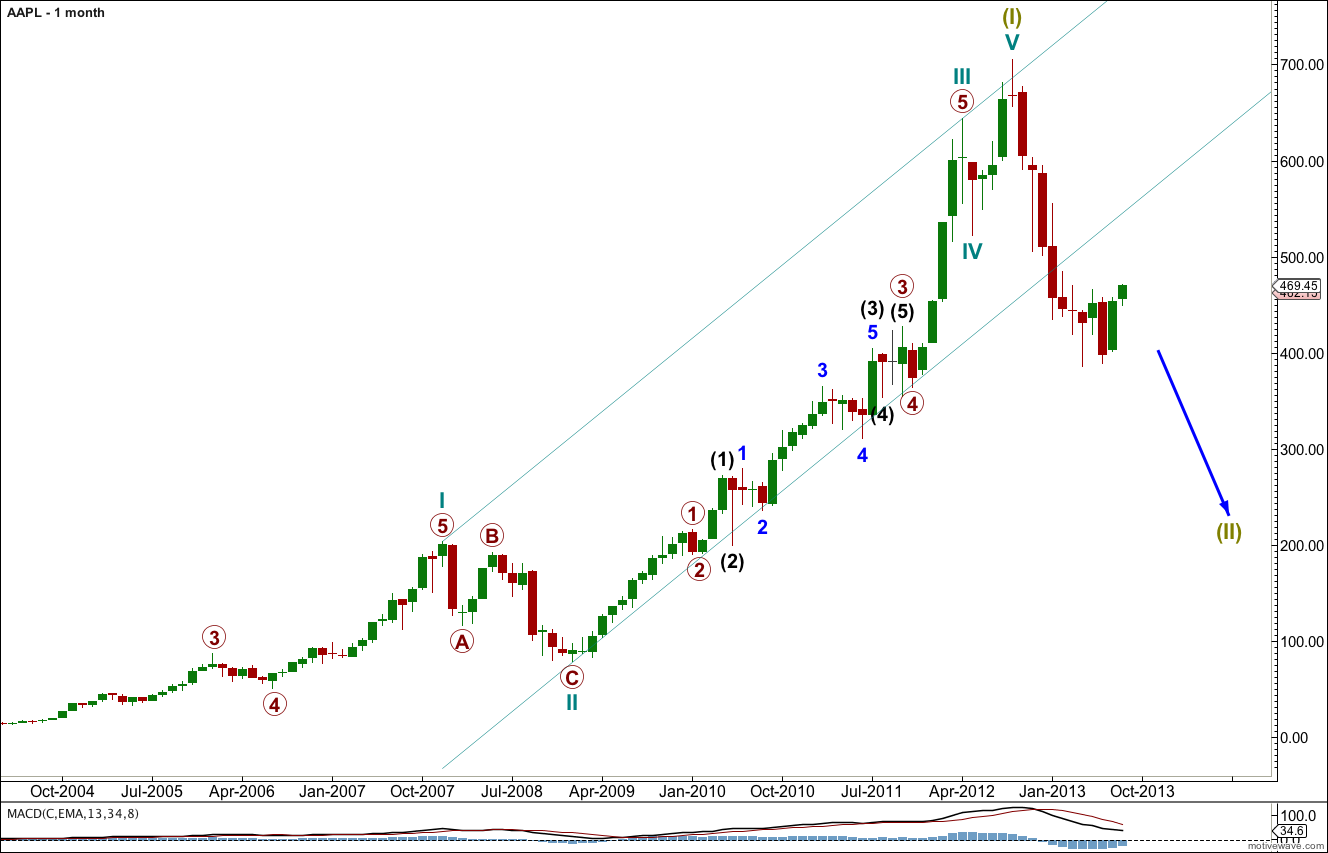
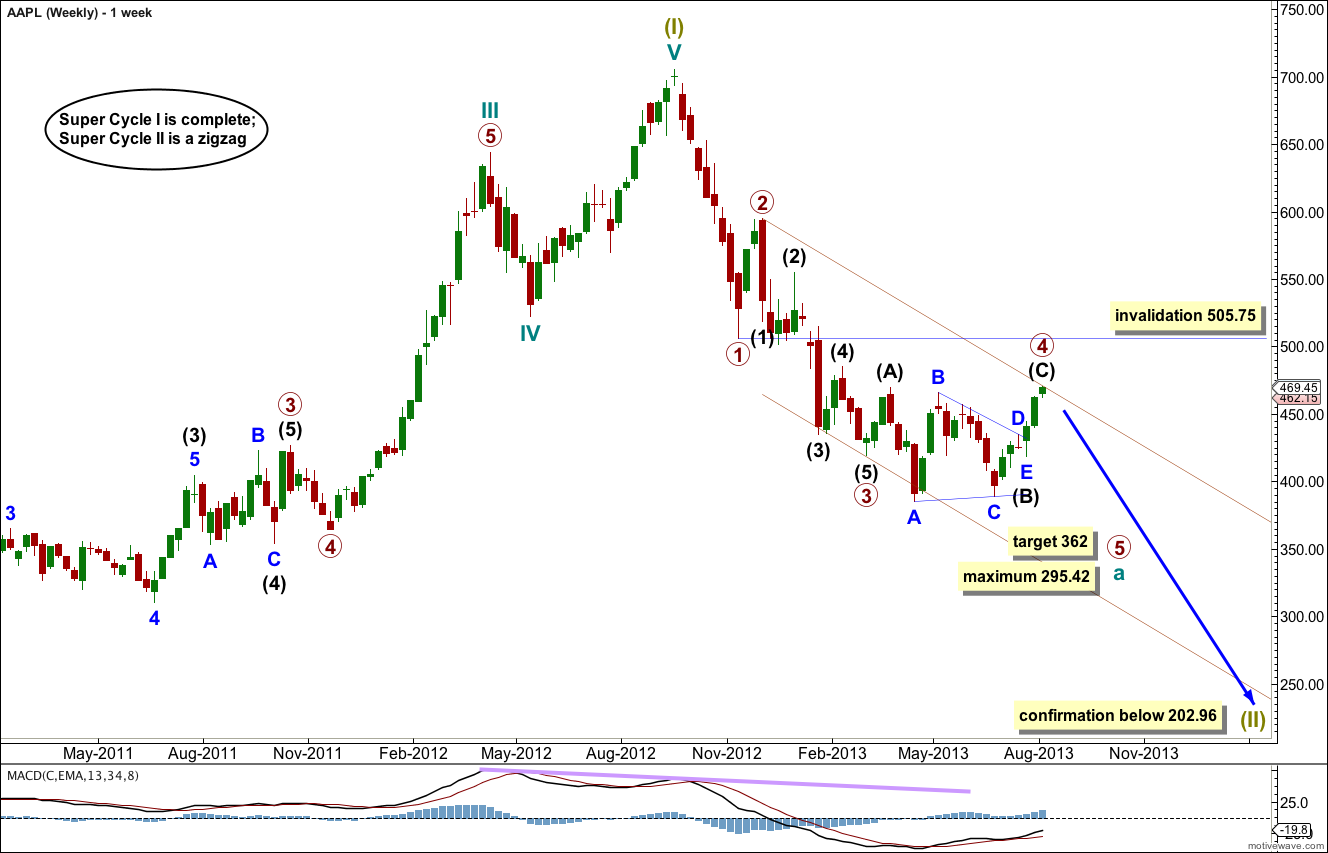
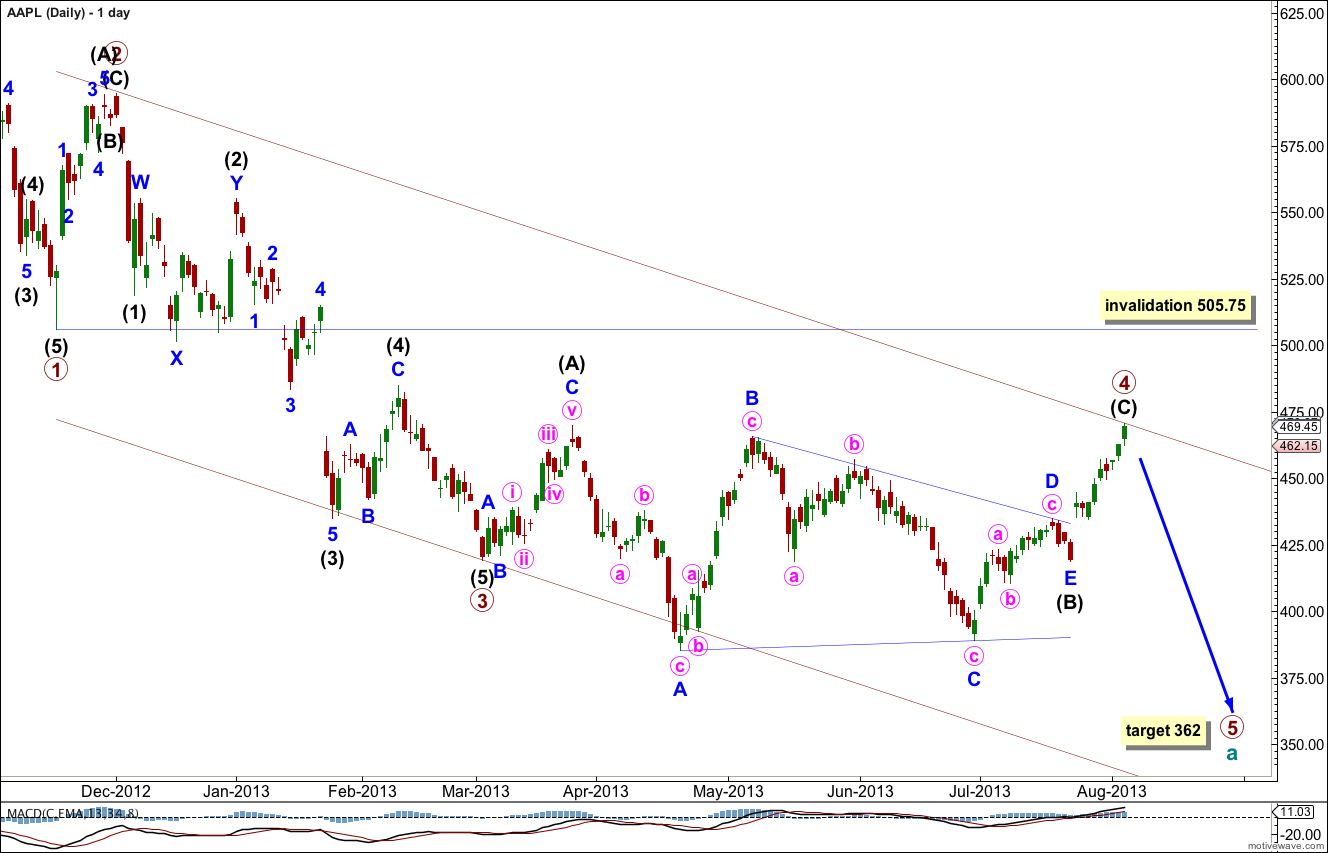
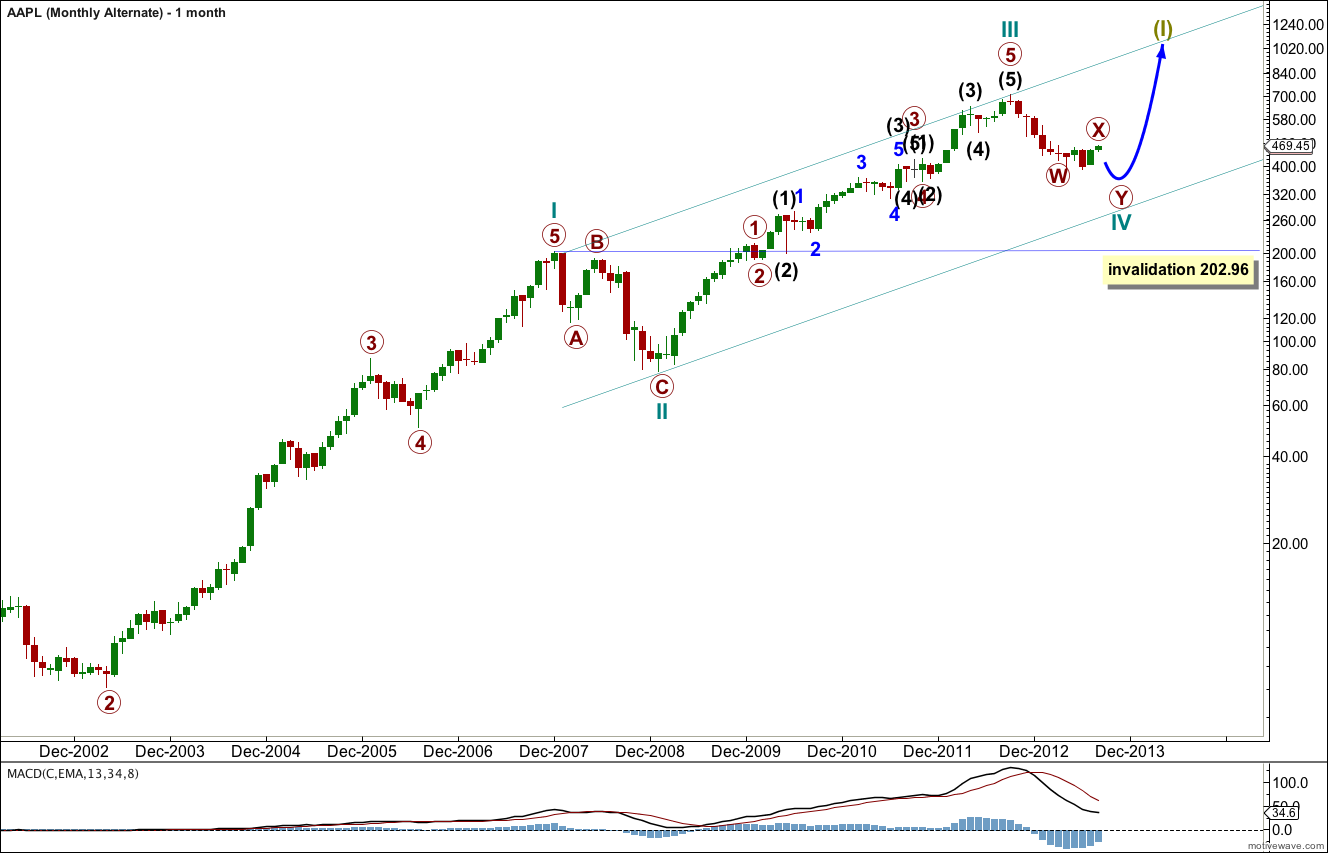
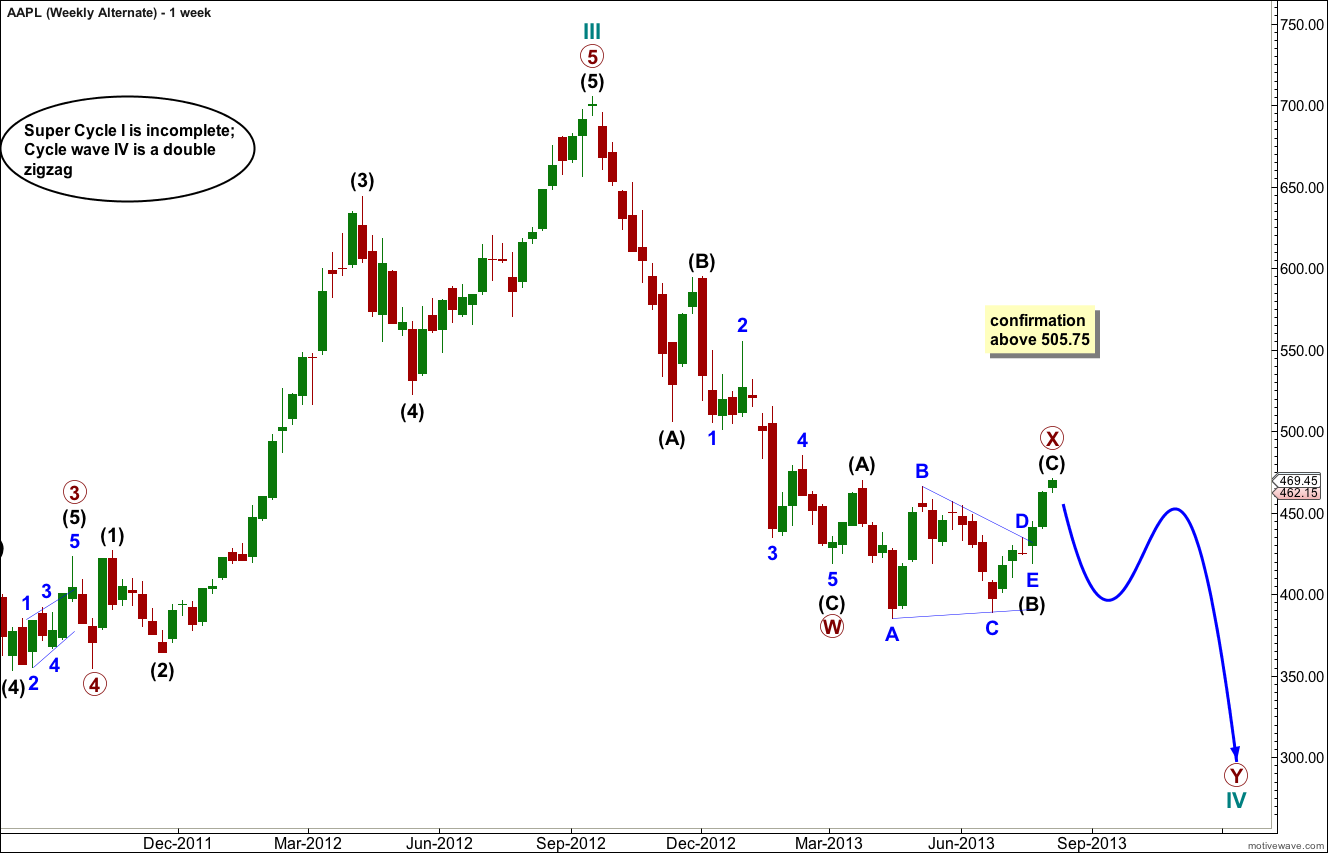
Hi Lara
In your primary monthly above you say the invalidation level is 505. In a lot of charts I’ve seen it has gone as high as 513. Do you not agree?
Regards
Nick
That wave count was invalidated, and I’m using the second monthly wave count.
I need to update the monthly charts.